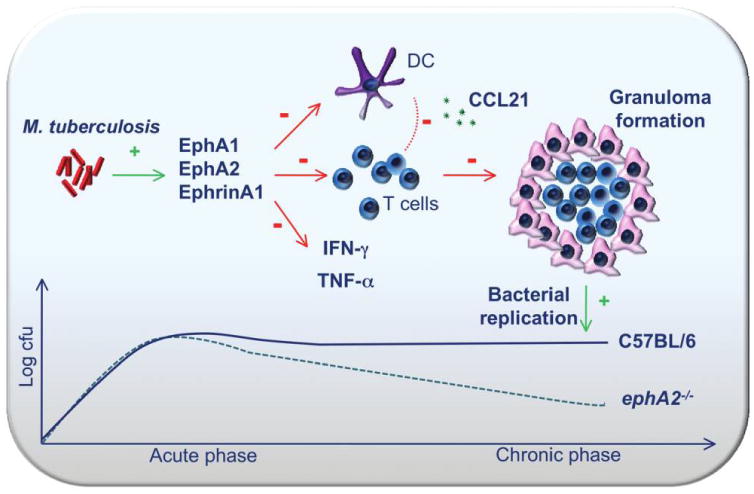Figure 7.

Model for the role played by erythropoietin-producing hepatoma (Eph) A receptors during Mycobacterium tuberculosis infection. In the absence of ephA2, there is increased accumulation of CD4+ and CD8+ T cells as well as dendritic cells (DCs) in the lungs. T cell recruitment is mediated through chemokine (C-C motif) ligand (CCL) 21, which is perhaps released by accumulating DCs. As a consequence of enhanced cellular infiltration, interferon (IFN)–γ and tumor necrosis factor (TNF)–α levels become elevated. Both of these events contribute to the development of larger granulomas and a reduced bacterial load during the chronic phase of M. tuberculosis infection.
